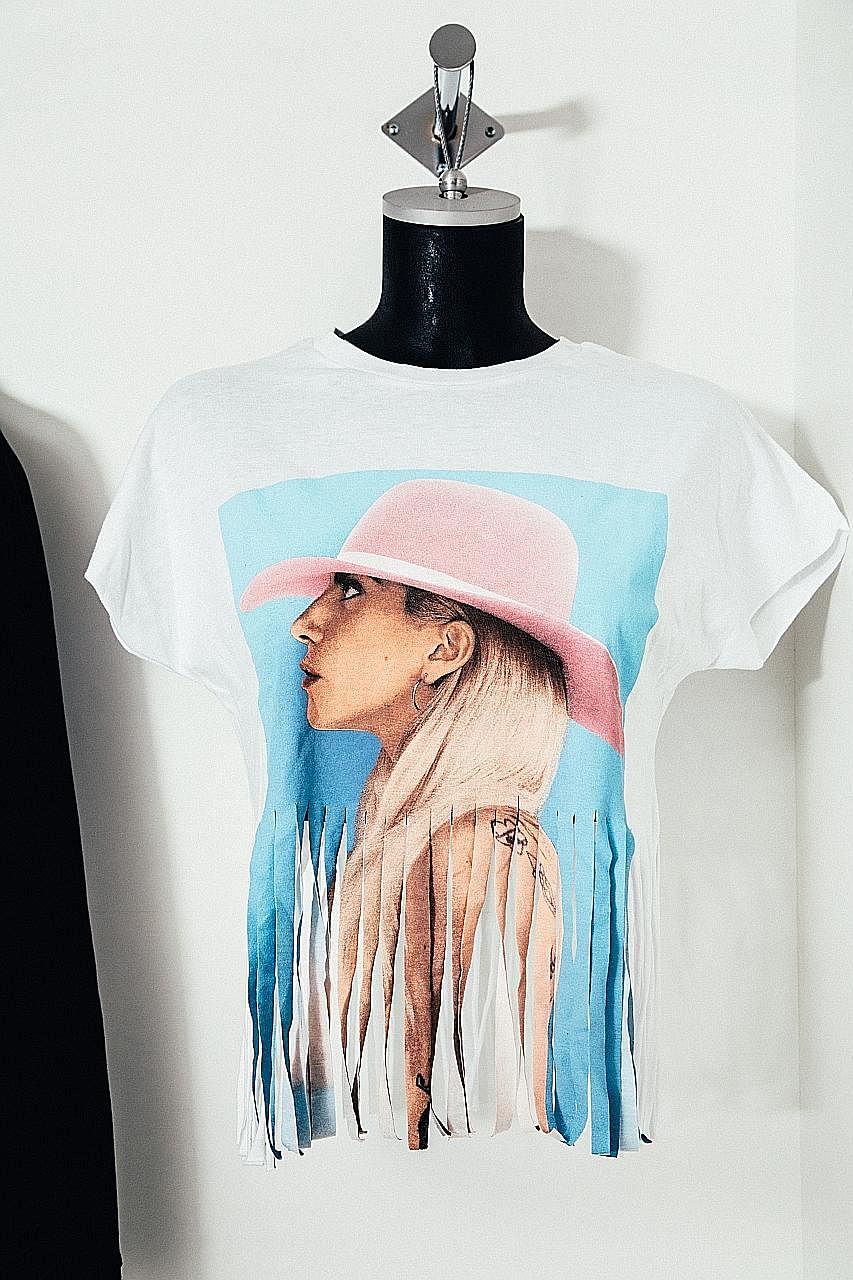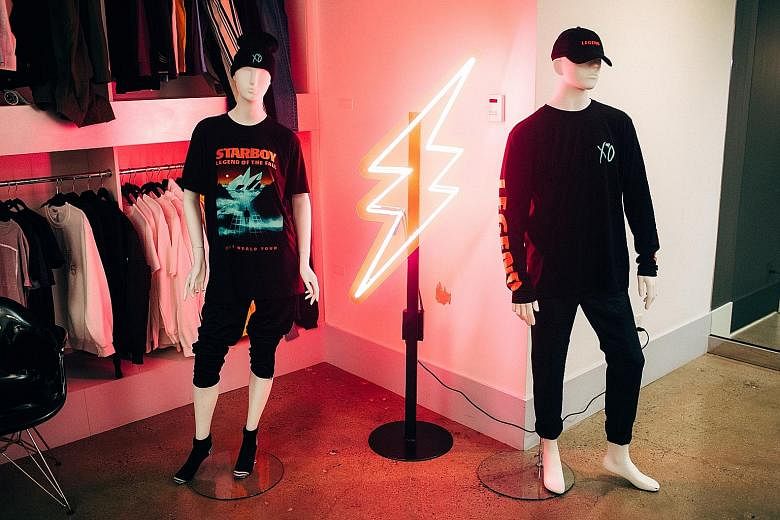NEW YORK • One Friday morning in early May, eight high-end boutiques in the United States and Canada were flooded with desperate fans jostling to claim their piece of The Weeknd, snapping up bombers, hats, shirts and sweatpants celebrating his album Starboy. Two weeks later, at exactly 5pm, at more than 200 stores, Urban Outfitters released merchandise decorated with Lady Gaga's face and the title of her album Joanne to barely controlled consumer delight.
Welcome to the world of elevated concert merchandise: special collections linked to specific cultural events, limited in availability and one of the newest and fastest-growing sub-sectors in the fashion world.
From the first half of 2014 to the first half of this year, the amount of tour-related products sold online increased by 720 per cent, according to Edited, a company that tracks analytics at more than 90,000 brands and retailers.
Driving the phenomenon is Bravado, the division at Universal Music Group that works with entertainers such as Justin Bieber, Desiigner, Selena Gomez, Lady Gaga and The Weeknd to design, manufacture and distribute branded products. It is led by Mr Mat Vlasic, an energetic New Yorker who favours a black-on-black uniform and meditation for handling stress.
Not far behind is the Thread Shop, Sony Music Entertainment's merchandising arm, which collaborates with artists such as Nas, Common, A Tribe Called Quest, A$AP Rocky, DJ Khaled and Fifth Harmony. It is run by Ms Frances Wong, also a New Yorker, who calls the Thread Shop's savvy customers "kids" and worked for Rocawear, the clothing label started in 1999 by hip-hop moguls Jay-Z and Damon Dash.
In a twist of corporate musical chairs, Bravado's Mr Vlasic founded the Thread Shop during a 12-year stint at Sony, while Ms Wong worked at Bravado until 2015.
Now, the two are engaged in something of an arms race to own the increasingly lucrative cross-disciplinary fashion territory they have defined.

Founded in 1997 by brothers Barry and Keith Drinkwater and sold to Universal about a decade later, Bravado operates in 40 countries and works with retailers such as Zara, H&M, Uniqlo, Selfridges and Barneys New York.
Last year, the revenue for the merchandising arm of Universal, of which Bravado is a major part, was €313 million (S$497 million), an increase of about 13 per cent from the year before. Besides handling merchandising for dozens of living artists, Bravado also works with the estates of former powerhouses, including Prince, The Beatles and Tupac Shakur.
The Thread Shop began in 2009 as a straightforward T-shirt business to support touring artists and eventually grew to provide more exclusive, higher-priced pieces and capsule collections.
The company works with some of the same retailers as Bravado, including Urban Outfitters, Pacsun and Kohl's and, like Bravado, operates globally.
When first releasing an artist's products, Bravado and the Thread Shop will often do so through pop-up shops. "We'll identify the ground-zero retailers that create demand, create urgency," said Mr Frank Bartolotta, Bravado's senior vice-president for national sales.
"That creates a crazy amount of energy. Because it's like, 'If I didn't get it during that three-day cycle, I need to figure out when I'm going to get it.' Then, we go to a larger retail partner."
In early May, Starboy merchandise was sold for three days only at boutiques in eight cities across the United States, including Patron of the New in New York and FourTwoFour on Fairfax in Los Angeles and also online for limited periods. After that, Bravado went to PacSun for a larger roll-out.
"If there's not an experience tied into this, it becomes stale, it becomes mute," Mr Bartolotta said. "When we create these moments that live there for literally 72 hours, there's an alertness and that fan is rabid." The key is to ensure pop-ups offer certain exclusive items.
"The kid that goes to New York wants the New York piece," Mr Bartolotta said. "The kid who goes to LA wants the LA piece. And then, there's the main collection. So, if you weren't in LA, you can then go, weeks later, to PacSun to get that extended collection."
Still, while the pop-up shops and exclusive items are a key for building attention, the moneymakers are the items that many consumers can afford and easily access.
"You always need premium to sell the mass," Ms Wong said. "I can't afford a Gucci bag at $5,000, but I'll buy a wallet for $700 and still be part of that lifestyle."
In fact, according to Edited, the artists who drive the most e-commerce traffic are Run-DMC, the Red Hot Chili Peppers and the Ramones (all Bravado clients). Not exactly of the moment.
"There's a huge middle market in this trend," said Ms Katie Smith, senior analyst at Edited. "It's not just buzzy, like, 'Check out the latest Pablo tee.'" (Pablo being from Kanye West's album The Life Of Pablo.)
"For retail, there's still a big opportunity for the older, more known artists. That stuff doesn't sell as fast, but it performs well."
In reality, the products attached to one artist are not vastly different from those of any other: The design might vary - especially if you bring someone on board, such as Jerry Lorenzo, designer of Fear of God, who collaborated with Justin Bieber; or Wes Lang, an artist who worked with West - but this is not high fashion.
The sense of diversification is manufactured by buzz built around the artist and it is key to perpetuating consumers' desire for the products.
Mr Bartolotta said: "You look at malls and you see traffic is down. We're bringing an experience that's being driven by the artists. When you do that, these retailers' appetites are stimulated. If we don't do this, we'll die like a lot of malls are dying."
NYTIMES

